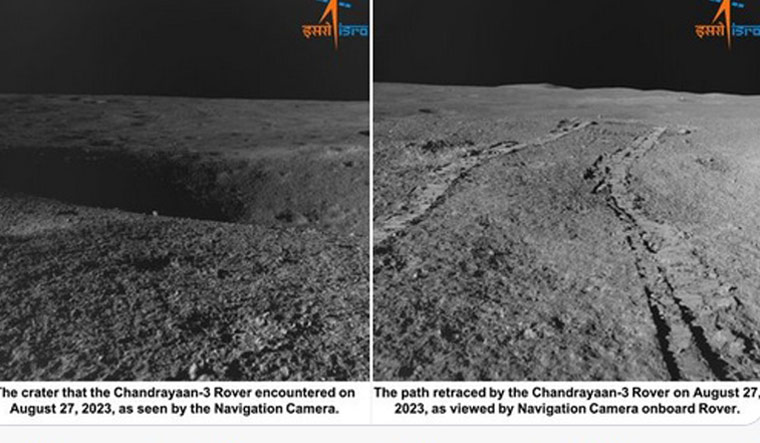The Pragyaan rover of Indian Space Research Organisation's (ISRO) moon mission Chandrayaan-3 changed its path after coming across a crater ahead of its path.
In a tweet, ISRO said on August 27, 2023, "the Rover came across a four-meter diameter crater positioned three meters ahead of its location."
"The Rover was commanded to retrace the path. It's now safely heading on a new path," ISRO added.
The space agency shared two photos—one showing the crater that the rover encountered and another showing the path retraced by it.
On Tuesday, ISRO offered the first observations from the ChaSTE payload onboard Vikram Lander.
ChaSTE (Chandra's Surface Thermophysical Experiment) measures the temperature profile of the lunar topsoil around the pole, to understand the thermal behaviour of the moon's surface. It has a temperature probe equipped with a controlled penetration mechanism capable of reaching a depth of 10 cm beneath the surface. The probe is fitted with 10 individual temperature sensors.
Tweeting a graph, ISRO said the " presented graph illustrates the temperature variations of the lunar surface/near-surface at various depths, as recorded during the probe's penetration. This is the first such profile for the lunar south pole."
Detailed observations are underway, it added.
What are lunar craters?
Lunar craters are formed when objects, such as meteoroids, collide with the moon's surface, creating a depression on the surface. They can vary in size. According to NASA, the South Pole-Aitken (SPA) basin is the largest and oldest recognised impact basin on the moon. SPA crater's diameter is roughly 2,500 km, stretching across nearly a quarter of the moon.


